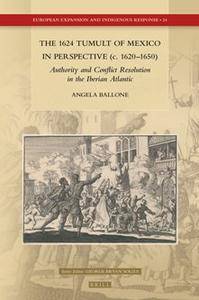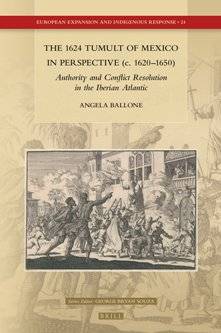The 1624 Tumult of Mexico in Perspective (c. 1620-1650) :
Authority and Conflict Resolution in the Iberian Atlantic
by Angela Ballone
English | 2018 | ISBN: 9004335471 | 394 Pages | PDF | 3.3 MB
Authority and Conflict Resolution in the Iberian Atlantic
by Angela Ballone
English | 2018 | ISBN: 9004335471 | 394 Pages | PDF | 3.3 MB
The 1624 Tumult of Mexico in Perspective proves that, despite the various conflicts underlying the disturbances in New Spain between circa 1620 and 1650, there was no intention to do away with the authority of the king.
In this volume, Ballone takes the Mexico City riot of 1624, a dramatic event in the history of the Habsburg Spanish Empire and of colonial New Spain (Mexico) that has interested scholars for some time, and utilizes it to examine and interpret the limits of vice-regal power and authority. By making this case study her centerpiece, she has produced a solid scholarly work that explores in detail two themes intimately related at this time to the exercise of power in the process of expansion, i.e. royal authority and conflict resolution. She is to be commended upon her research in European sources and archives that have hardly been consulted on this topic before, e.g. in Austria and Italy, and other contemporary materials such as poems and satires that dealt with the event. The general reader will quickly recognize that Ballone’s interest in and focus on the Tumult is more about royal governance than a simplification of the divide of authority between judges and clergy and the viceroy that can be and has been reduced to the examination and struggle between local (creole) and metropolitan (peninsular) power. Her book, as a consequence, is more a Spanish imperial case study than an example of colonial Latin American history. While she deals and respects past interpretations of the event from the Mexican side, her use and interpretation of it is more from the monarch’s and the Habsburg imperial bureaucratic viewpoints. Specialists will recognize that Ballone’s The 1624 Tumult of Mexico in Perspective examines a case study that deals with royal governance and the role of power and authority in expansion, which provides us with numerous lessons that were historically and contextually true not only to that event but also more broadly to empires and their expansion in general and to the Habsburg Spanish Empire in particular.



